Distribution Transformer- At present, finding a convenient as well as a desirable place for installing a distribution transformer is one of the major problems faced by the transformers’ designers. It is severe, so energy departments require to plan for a suitable place for placement by considering the load, possibility, load center, and further development, etc., especially in urban regions. This form of the transformer can be configured on a single pole or H pole according to the weight, size, and requirements of the device. Accordingly, the option for installation of this device can be performed by the distribution designer based on the availability and capability of space.
A distribution transformer can be modeled in the same way as a small size transformer. The conservator, breather unit, oil tank, oil indicator, pressure relief device, buchholz relay, radiator, temperature detector, thermal relay, and bushing are the key components of this transformer. A distribution transformer is a crucial product of industrial tool use. Distribution Transformers are available from a variety of suppliers and companies, as well as various Manufacturers and Distributors, and there are many Distribution Transformers For Sale on Linquip.
There is a comprehensive list of distribution transformer services on the Linquip website that covers all of your electrical needs. Linquip vendors can assist you with this. Please contact Linquip’s Distribution Transformer Experts to learn more about how to connect with a diverse group of service providers who consistently deliver high-quality items.
What is a Distribution Transformer?
Definition
A distribution transformer is also introduced as a typical form of an isolation transformer. The basic function of this transformer is to modify the high voltage to the standard output like 240/120 V to apply in electric energy distribution. There are various forms of transformers available in the distribution system, such as single-phase, three-phase, pad-mounted, underground, and pole-mounted distribution transformers.
A distribution device has another term that is a service transformer. It is an instrument that supplies the final voltage transformation in the power network, stepping down the output employed in the distribution lines to the users’ rating.
Normally, a distribution transformer level is less than 200MVA, while some national norms can allow for ratings up to 5000 MVA to be known as distribution transformers. If the level is more than 200MVA (or 5000MVA in some regions), it’s introduced as a power transformer.
Since distribution transformers are powered for 24 hours a day (even when they don’t use to carry any load), dropping the iron wastes has an initial role in the transformer’s modeling. Commonly, they don’t perform at full capacity. At lower potentials, they are constructed to have optimum efficiency. The voltage adjustment in these devices should be kept to a minimum in other to have higher efficiency. So, they are constructed to include the small leakage reactance.
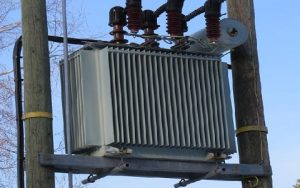
In general, these transformers exist in various sizes with different efficiencies along with insulating oil. These devices are also present in various shapes and weights. Choosing this transformer mostly lies in the budget and requirements of the consumer. There are different forms of distribution transformer connections present in industrial applications such as delta-delta, star-star, delta-star, star-delta, and Zig Zag/delta zigzag.
History
The men behind the creation of the transformer are Lucien Gaulard and William Stanley and applied the device for both practical and commercial cases. The new form of the transformer was then produced in the year 1886, where this employed AC power as the power supply. Ranging from radio networks to microelectronics, these devices are exceedingly used from the time of their creation. The invention of the distribution transformer occurred in the year 1886 itself, where this employed full alternating current as a power network. So, today in this post, let’s focus on the distribution transformer and its features.
We all know that the output level of a distribution station differs from 4,000 to 36,000 volts. Therefore, for some conventional aspects, these voltage variations are too great, and it is essential to step down the rating. And the one form of transformer which meets this need is the distribution transformer.
These distribution systems come under the categorization of electrical isolation transformers, which transmit extended voltage rating to a minimal state. Generally, this instrument steps down the voltage level to almost 240 volts which is needed for households and other small cases. The device performs in a fully straightforward line to provide isolation in between the windings. Electrical power is allowed to pass across these devices to handle the voltage levels.
Properties
Some important properties of a distribution transformer are stated as:
- Minimal in size
- Mainly implemented for low voltage cases, which is a minimum of 33 kV and employed as a step-down transformer.
- Performs at either 60-70 percent of the whole load all over the day
- Requires only 3-5 points for tap charger
Distribution Transformer Construction
The modeling of a distribution transformer can be performed similarly to the small size types. The main components of this transformer mainly include conservator, oil tank, breather unit, buchholz relay, oil indicator, pressure relief device, temperature detector, radiator, thermal relay, and bushing.
- The oil tank is employed to soak the windings by placing them in.
- A conservator is installed above the oil tank at the outside of the transformer unit. It is attached to the basic tank by using a metallic tube. The oil through the tank can be simply contacted and enlarge all overloading so that the temperature of the oil can be decreased or increased.
- Buchholz relay is applied when a conservator tank is performed since it monitors errors like a waste of oil when it goes low, improper moving of oil between the transformer and tank.
- A Breather set consists of silica gel that absorbs the humidity of the oil. It modifies its color from blue to pink.
- The oil indicator determines the rate of the oil through the conservatory unit.
- The temperature detector identifies the oil temperature. If the oil temperature increases to a particular level, then the device will be disconnected from the system.
- The pressure relief part reduces the pressure through the transformer to prevent an explosion of the device.
- A thermal relay is employed as an indicator for the winding temperature.
- The radiator is applied to improve the transformer’s cooling efficiency.
- The bushing is utilized to connect the internal sections of the transformer using an exterior electrical network.
Distribution Transformer Design
A distribution transformer includes four main components that determine its design. These main parts are the input connection, the output connection, the windings or coils, and the core.
Input Connections
Input connections are also introduced as the primary section since electricity goes into the system; it should be connected to this site.
Output Connections
The output section has another name, which is the secondary part of the transformer. In that section, electrical energy is sent to the electric instrument in your factories or house. Commonly, the voltage in the transformer’s output section (or secondary side) is lower than in the primary section.
One of the basic differences between a power transformer and a distribution transformer is that a power type commonly has one secondary and one primary or one output and input setup. A distribution transformer may have one primary section and two or more secondary components, according to the purpose.
Winding
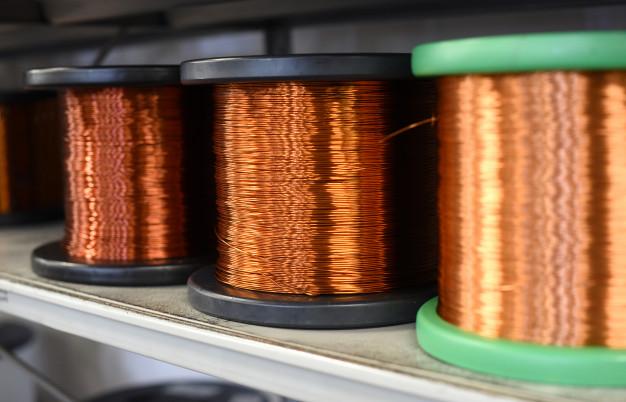
All forms of transformers include two windings, and the distribution transformer is identical. It is classified into primary and secondary types. The primary one has a performance of drawing energy from the supply. The secondary type transmits electric energy to electrical equipment.
Core
The transformer core presents a path that determines the magnetic flux produced in the transformer. Commonly, the core is not a solid steel bar. It consists of several laminated steel sheets, or plates folded neatly. This model is to eliminate or reduce the heating.
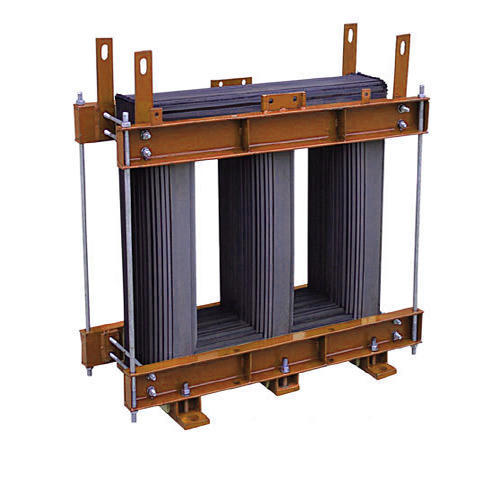
The transformer’s cores have two forms employed based on users’ demand: Core Type and Shell Type. The major difference between these forms is how the primary and secondary sections folded around the steel core.
- Core type: The windings are turned in the laminated core.
- Shell type: The laminated core wraps the components.
Once the input voltage enters the primary winding, alternating current begins to move in this winding. When the current goes across it, a constant changing and alternating field are produced in the transformer’s core. Once this magnetic field operates through the secondary winding, a new alternating voltage is created in that one. Click here to see the foundation of a distribution transformer completely.
The main aspect of identifying the transformer kinds and the output voltage is the rating of practical turns of wire on each side. Say the turn number of the primary and secondary section is N1 and N2, the voltage in the two sides call V1 and V2; so, we have this equation:
\frac{{N}_{1}}{{N}_{2}}=\frac{{V}_{1}}{{V}_{2}}
If the output winding voltage is greater than the input voltage, then the secondary side has more wire turns than the primary section. So, the output voltage increased larger, also introduced as “a step-up transformer.” However, if the output voltage is less than the input one, it’s known as “a step-down transformer. Typically, a distribution transformer operates as a step-down transformer.
Types of Distribution Transformer
Distribution transformers are classified into various types like single phase, three phases, pad-mounted, pole-mounted, and underground transformers according to the application or requirement.
Single Phase
These transformers are particularly employed for applications wherever a three-phase source is not needed. Typically, these are utilized for repairing overhead distribution powers in residential cases. These are also applicable in light commercial loads, industrial lighting, and power applications.
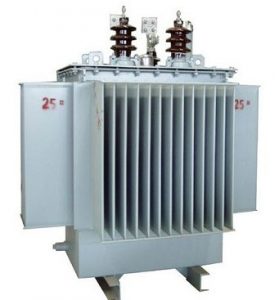
Three Phase
This type of distribution transformer is used to keep electrical energy from the basic distribution network to a minor distribution user. This form of transformer sends the current to a secondary distribution case and also decreases the voltage of the primary component. These types decrease the voltage source for the primary network according to the user requirement.
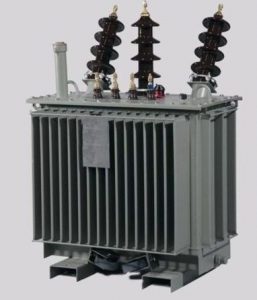
This voltage often modifies and can be dissimilar for the consumers of residential, commercial, and light industries. These devices operate based on the different ratings of frequency and voltage according to the standards defined in various countries. While a single-phase type is employed in residential applications, a three-phase form with a pad is used in primary underground networks.
Pad-Mounted
This form of distribution transformer consists of a locked steel cupboard that is configured on a concrete pad. This type is set in locations where they do not have enough place for a fenced enclosure. This device can be employed with electric energy distribution lines at an overhead electrical path for dropping the primary voltage to provide for the customers. A single type of this pad-mounted transformer can serve several homes/a large building. The power level of this type differs from 75 kVA to 5000 kVA and contains fixed fuses and switches.
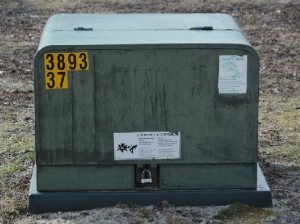
Tanks of this type can be constructed and protected from the corrosive substances and accumulation of any liquid. They can be protected from zinc sprays in coastal regions, whereas, in highly corrosive areas, stainless tanks are employed.
A few of the features of this type are:
- Very minimal volume, and the setting is streamlined, which permits the instrument to be either mounted on single and dual pole designs.
- Voltage level differs from 11 to 33 kV.
- As these are installed nearly 5 meters above the earth, there occurs no damage to people and animals who are walking.
- These instruments can tolerate complicated atmospheric situations.
- The shape of them reduces the water storage.
Distribution Transformer Connections
The connection of this instrument changes according to the form of the distribution transformer that is applied. Single-phase types are manufactured either with one or two bushings, and they are arranged in wye shape. These primary sections can also be used with three-wire or four-wire wye connections only when arranged properly.
And also, these transformers are installed to the overhead lines in two approaches, and those are:
- Wye: Here, a phase to a neutral form of transformer is employed. It has a top section where it has a junction with either of the phases. The other section of the winding is attached to the neutral line, and it is grounded. A wye configuration is selected since unstable powers might cause currents in the neutral section, and with this connection, those include a direction towards the ground. While in the delta connection, the unstable powers develop voltage modifications on the three-phase wires.
- Delta: Here, a phase-to-phase form of transformer is employed. It consists of two bushings where include a connection with two phases. The other section of the winding is attached to the neutral line, and it is grounded. The disadvantage of this configuration is that when any one of the primary phases is in the de-energy state, the other phase will result in the movement of current in a reverse direction which might cause problematic damages to the workers and staff.
Difference Between Power Transformer and Distribution Transformer
The main differences between a power transformer and a distribution transformer are summarized below:
- Power transformers are employed in the transmission line of greater voltages for step down and step up cases (400 kV, 200 kV, 110 kV, 66 kV, 33kV) and are typically rated above 200MVA.
- On the other hand, a distribution transformer is used for lower voltage applications as a means to end consumer connectivity (11kV, 6.6 kV, 3.3 kV, 440V, 230V) and is normally rated less than 200 MVA.
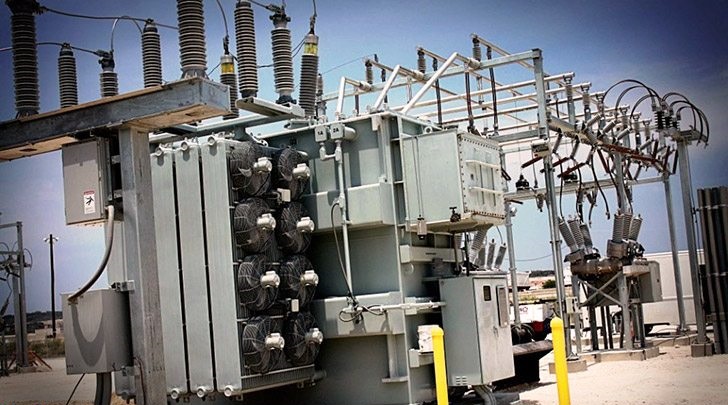
Transformer Size / Insulation Level
The power transformer is used for the transmission application at great load, high voltage larger than 33 kV, and 100% efficiency. It also includes a big in size in comparison with a distribution transformer and is employed in producing station and transmission station high insulation rating.
The distribution transformer is applied for the distribution of energy at a low voltage less than 440v-220v in domestic cases and 33KV in industrial applications. It can operate at low efficiency at 50-70%, easy in installation, small size, having low magnetic wastes, and is not often fully loaded.
Iron Losses and Copper Losses
As discussed before, power transformers are utilized in transmission circuits, so they do not directly receive to the users; thus, load variations are very less. These are loaded completely 24 hours a day, so Copper and Iron wastes take place all over the day.
The average powers are nearer to full load, and these are constructed in such a method that maximum efficiency at complete load state. These are independent of time so, in evaluating the efficiency, just the power basis is adequate.
Maximum Efficiency
The basic difference between power and distribution transformer is that a distribution transformer is constructed for maximum efficiency at 60% to 70% power as it generally doesn’t perform at full load all the time. Its load is based on the distribution demand. While a power transformer is created for maximum efficiency at 100% load as it often operates at 100% load is close to producing station.
A distribution transformer is employed at the distribution rating where the voltages should be lower. The secondary output is almost often the voltage delivered to the end-user. Due to the voltage drop limitations, it is commonly not feasible to deliver that secondary output over great distances.
Therefore, most distribution networks tend to initiate many ‘clusters’ of powers fed from the transformers, and this, in turn, means that the thermal level of the distribution device should not be very great to supply the loads that they must serve.
Uses/Applications of Distribution Transformer
Some applications of the distribution transformer are as the following:
- This transformer varies from high voltage input to low voltage output, employed in businesses and homes.
- The basic operation of this is to step down the input to supply isolation between two windings, including primary and secondary.
- This transformer distributes the energy to remote regions which are created from the power plants.
- Typically, a distribution transformer distributes the electrical power to industries with less usage under 33KV and also for domestic applications less than 440volts to 220volts.
What Is the Difference Between Power Transformers and Distribution Transformers?
Transmission networks with much higher voltages use power transformers, whereas distribution networks with lower voltages use distribution transformers. Power transformers come in a variety of voltage levels, including 400kV, 200kV, 66kV, and 33kV.
How Do You Install a Distribution Transformer?
Allow adequate cable clearance and avoid putting it near blades or coils. Follow the NEC’s minimum wire bending space clearances at conductor terminals. Depending on the kVA rating of a unit, follow NEMA requirements for transformer sound control if necessary.
Buy Equipment or Ask for a Service
By using Linquip RFQ Service, you can expect to receive quotations from various suppliers across multiple industries and regions.
Click Here to Request a Quotation From Suppliers and Service Providers
Download distribution transformer PDF
Read More In Linquip
- Difference between Power Transformer and Distribution Transformer
- What is Electrical Transformer?
- What is Auto Transformer? Advantages & Application
- What is Step Up Transformer?
- What is the Efficiency of Transformer?
- What is Step-Down Transformer and Its Application?
- What is a Single Phase Transformer?
- What is Power Transformer?
- What is the Current Transformer?
- What is Potential Transformer?
- What is the Equivalent Circuit of Transformer?

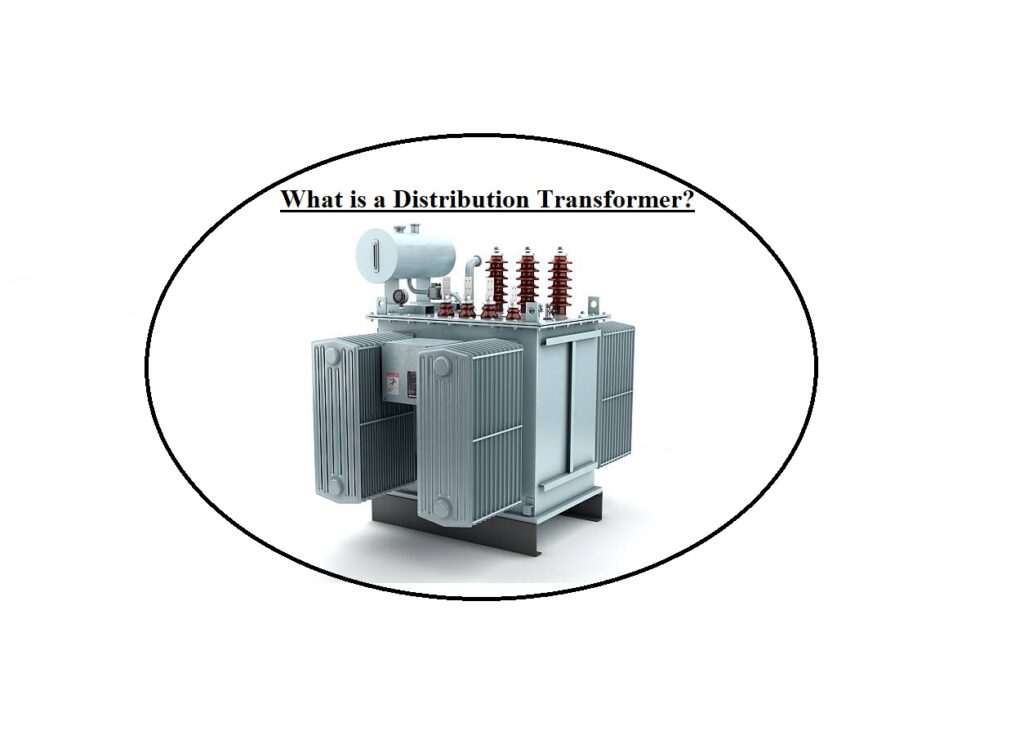


Thank you same bady have got me
Thank you for your consideration.
Thank you so much. We will keep our effort for the visitors.
Very useful transformer all parts
Thank you for your comment Sara.
This is extremely helpful information. Thank you for making this information available to us.
Thank you for your consideration.
This is extremely useful information.Thank you for sharing this information with us.
Thank you for your consideration.
wow very useful now at least I can defend my Industrial training with Great confidence.
Thanks for sharing your experience with us! You can also visit our industrial directories, where you can find thousands of various industrial equipment based on your application and demand.